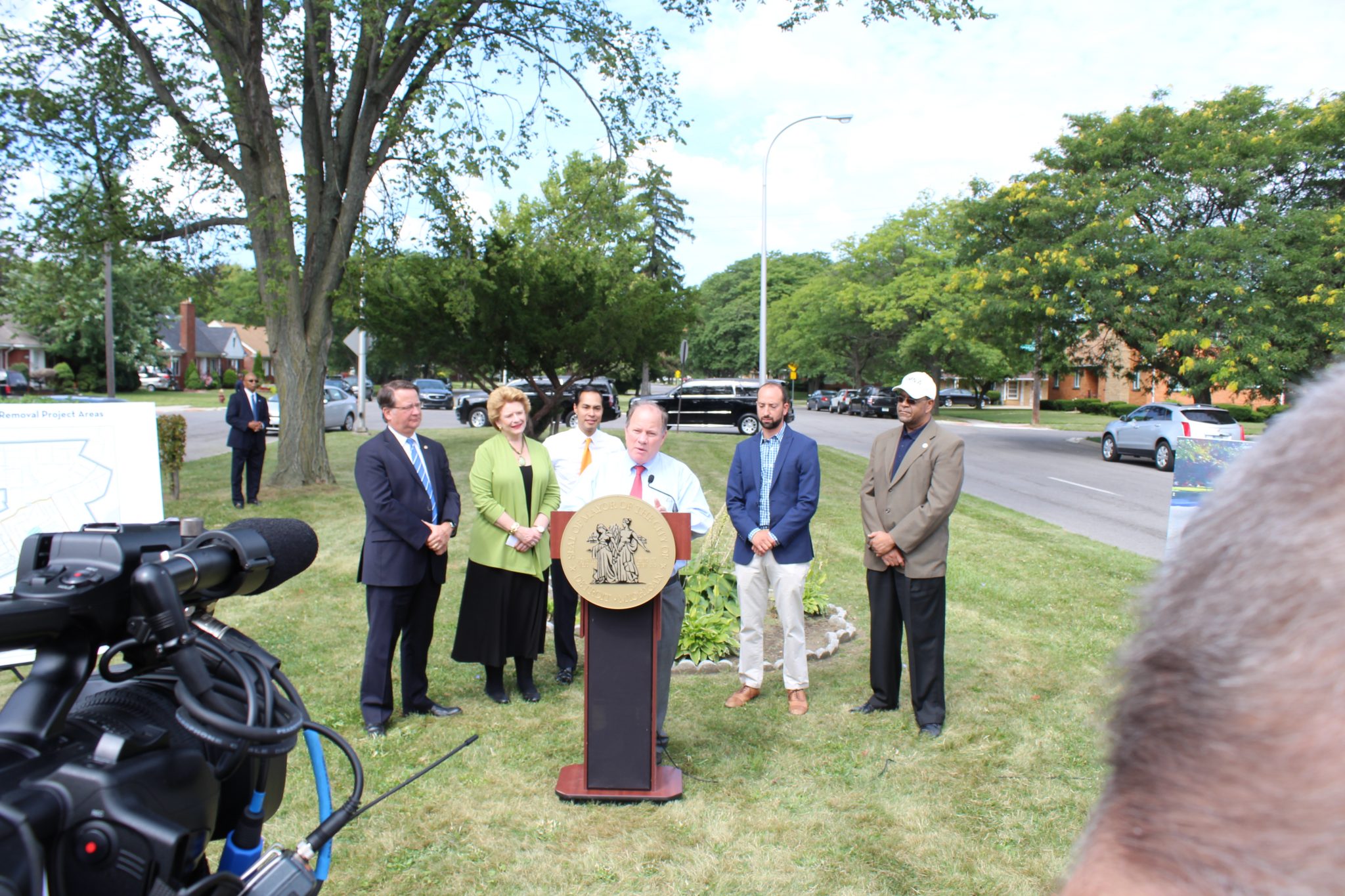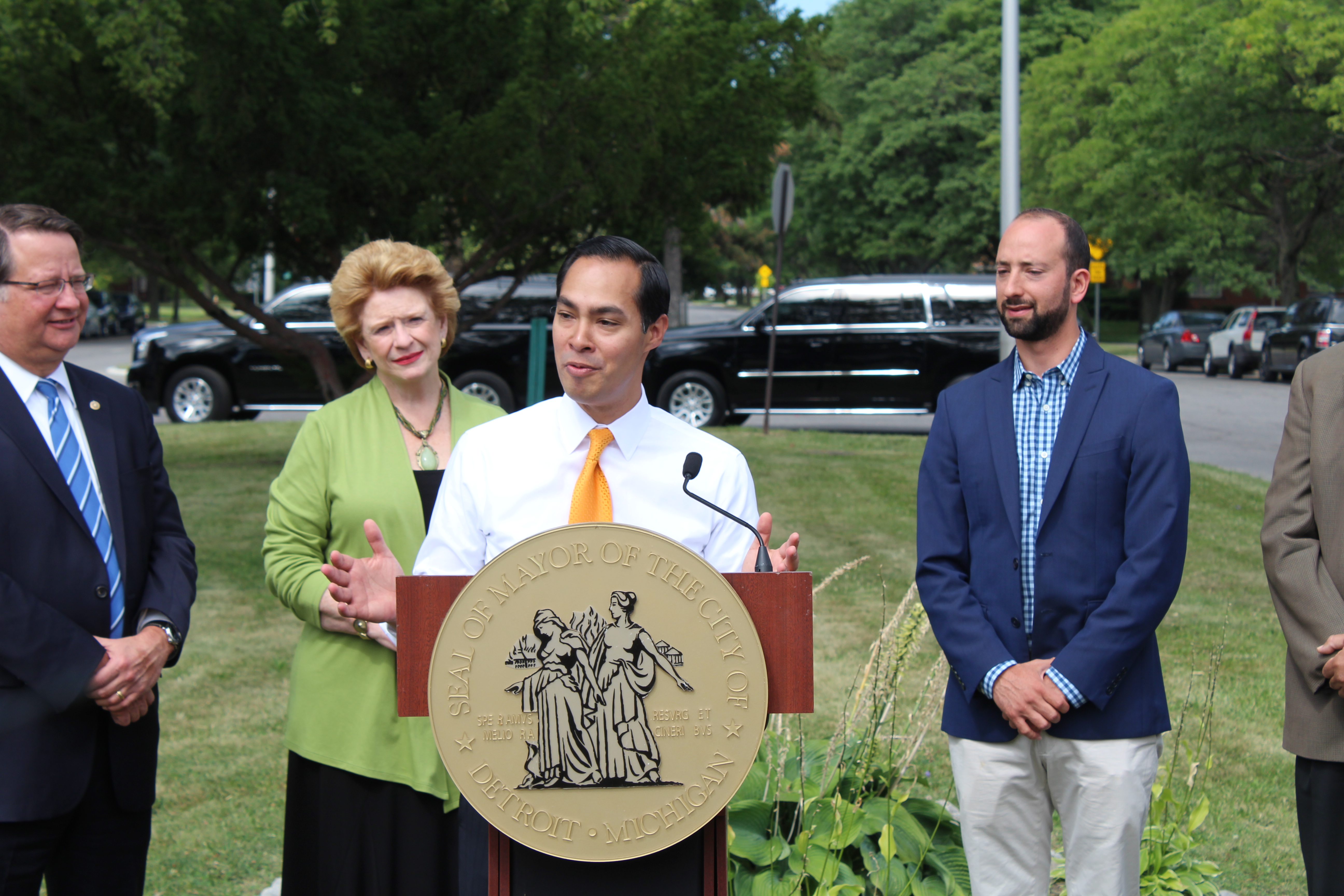HUD Funding to Aid In Greening Detroit’s Infrastructure
Solar energy, bioswales and plants: Nearly $9 million from HUD will help Detroit’s manage storm water runoff.

A year ago, torrential rains caused flooding throughout southeast Michigan, hitting some of Detroit’s neighborhoods particularly hard. Nearly 60,000 households in the city had some damage, with businesses and city infrastructure also affected.
Because the city’s sewer system combines household and business wastewater with storm water, billions of gallons of untreated overflow ended up in the Detroit River as well as in people’s basements.
listen“In this city, because it’s an old city, we have combined sewers. What you flush down your toilet or runs down your sink mixes with the rain that comes off the road,” says Mayor Mike Duggan. “So when we have a terrible rainstorm like we did last August, the pipes are overwhelmed, and it backs up into the basement, which did enormous damage.”

Rebuilding the city’s water and sewer systems to separate waste and storm water would cost “tens of billions of dollars,” says Duggan, so the city is seeking other ways to control run off.
An $8.9 million federal grant is going to help. Announced Friday, the funds from the U.S. Department of Housing and Urban Development will pay for tearing down blighted homes and for creating green infrastructure that will naturally manage storm water. The funding is coming from HUD’s Community Development Block Grant Sanction Fund – money that other cities failed to spend.
listen“This is going to be a major initiative,” Duggan says. “Detroit is going to be a national leader in using vacant land in a way that’s both beautiful and environmentally sensitive, and with the grant today from HUD, Detroit is going to take the first major step in the re-use of that vacant property.”
Duggan and federal officials made the announcement in a west-side neighborhood. Standing on the grassy median of Oakman Boulevard, he used the setting to explain the project.
listen“What we’re going to do is direct the rain that hits the street here on Oakman into the median with water-absorbing plants. We’re going to take the water out of the storm system and put it into the landscaping. That’s what green infrastructure is all about,” Duggan says.
Three neighborhoods are slated to have projects: Brightmoor, Mount Elliot and McDougall-Hunt. The projects include installing solar panels to create renewable energy to pump storm water, adding to medians and other public space certain kinds of plants with root systems that help direct water away from the sewer system, and designing public gardens and spaces that help collect water during big storms.
listen“These three developments will introduce new sources of clean energy and beautify the surrounding community, a win win for both the environment and for Detroit’s residents,” says HUD Secretary Julian Castro, who was in Detroit for the announcement.

In those three areas, Duggan says the city will change what it does to land after houses are torn down as part of the ongoing blight-removal effort.
listen“We’re going to continue demolitions, but when we demolish on those properties, instead of planting slow-growing grass which we plant today, we are going to plant trees and shrubs whose roots absorb a great deal of water,” he says. “We are actually going to build into these neighborhoods as we demolish the kind of landscaping that will hold the water on site.”
